Dave Shull On Why HP Partners Need to ‘Change The Dialogue’ With Customers And The ‘Astonishing’ Road Ahead
New HP President of Workforce Services and Solutions Dave Shull has already met with dozens of HP partners in an open dialogue on how to structure partner compensation for partners in a “lifelong” customer relationship services model.
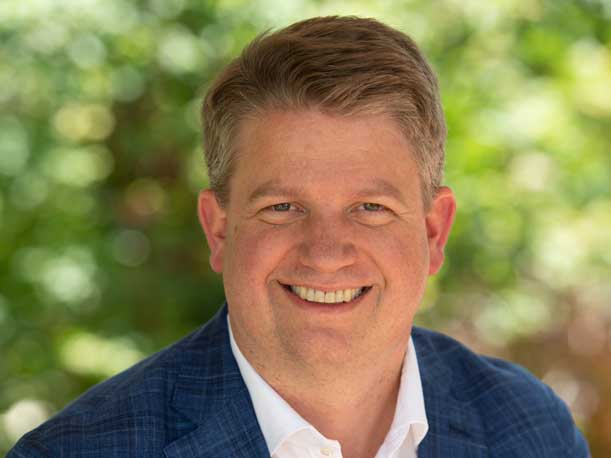
New HP President of Workforce Services and Solutions Dave Shull says partners need to change the dialogue with customers in order to build a “lifelong trusted” subscription services business.
“I think the first thing I would recommend to a partner is: change the dialogue with your customers,” said Shull, the former Poly CEO who took on the HP services subscription partner challenge after closing the deal last summer for Poly to be sold to HP for $3.3 billion. “Pick 10 or a dozen of your customers the same way I am doing with channel partners and ask them what has changed in the way they view IT services? What would make them view us collectively – our channel partners and us - as truly strategic?”
Shull, who officially started in the newly created workforce and services president’s post three months ago and reports directly to HP CEO Enrique Lores, has already met with dozens of HP partners in an open dialogue on how to structure partner compensation for partners in a “lifelong” customer relationship services model.
Partners need to shift the “dialogue with our mutual customers from tactical to strategic,” said Shull. “That is what creates that lifelong trusted relationship. But it is a different listening skill. It is a bit of an uncomfortable place because I am asking our partners and our customers things where I don’t necessarily know the answer but I think most of our joint customers would really value that kind of open ended dialogue.”
Shull said the subscription services transformation at HP is not unlike the one that he undertook with partners as chief commercial officer at satellite TV provider Dish Network. In that case, independent partners moved from selling the satellite Dish to streaming services like Netflix and HBO.
“It is not that different than what we are walking into here at HP,” he said. “Of course we have massive distributors. We have some very, very large global VARs. But we have a lot of entrepreneurs who are running their core businesses, they are selling day in and day out, they have the relationship with the customers. They have been selling those customers our PCs and our printers which we love and we appreciate. Now we are saying, ‘We have got to have a different conversation. We have got to have a broader conversation. Every time you touch that customer think about the lifetime value of that customer.’”
Click through the slideshow to see more of what Shull told CRN.
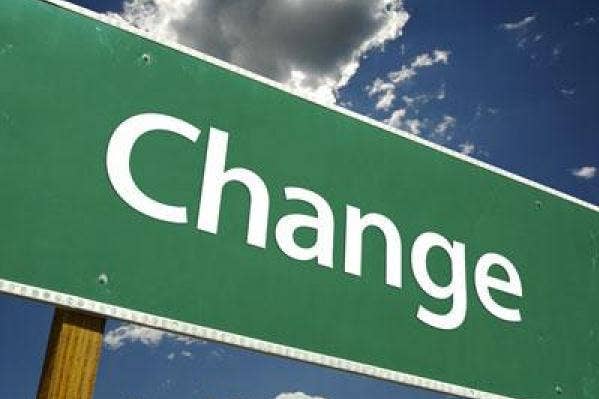
What kind of changes did you make to the business model and how did it impact partners when you were chief commercial officer at Dish Network?
I spent 10 years at Dish Network and Dish Network was all in on services. Everyday Dish looks at how many subscribers they have, how many of them are turning off, how many of them are coming back on and then what is the average revenue per user (RPU).
So I spent a lot of time managing the upsell, how do you get more HBO in, how do you get more Showtime in, how do you get people buying more from you?
It is a very different operating model. Most of Dishes’ business was through channel partners. So it was sitting down with thousands of channel partners around the country saying how are we going to partner with you? How do we align interests to get the right subscribers in at the right economics so that we both make money? That was kind of my introduction to the services world.
From there I went on to be the CEO of The Weather Channel, Tivo and then Poly, three very different businesses, all of which had sort of interesting challenges because they were all very established brands that had been around for 30 to 40 years. So it was all about looking at how do we take these brands and position them for a growth oriented future.
After being CEO of Poly, Tivo, and The Weather Channel, why did you take the job as president of the HP Workforce Services and Solutions business?
We sold Poly because we felt like the need for scale was tremendous. There are a series of other players in the market whether it was Cisco or Logitech, those are great companies. But being able to combine the HP scale on PCs and printers with the Poly collaboration gear in a $60 plus billion (company) is a much better scale story for our customers who range from consumers to the Global 1000. They want a complete solution. They don’t want sort of a fragmented offering. That is why the Poly board felt like it was the right strategic move to do that deal.
I took the job because it is a rare opportunity to walk into a Fortune 50 company and say: ‘We are at an inflection point. We are at an inflection point where our CEO has declared the lifetime value of the customer, the lifelong relationship with the customer is where we want to bet the future of the company.’ To make that shift from a transactional entity to one that values that lifelong relationship is a big change for a company that has 50,000 employees and $60 plus billion. I wanted to be part of that change. I wanted to be part of that vision for where we are going to go.
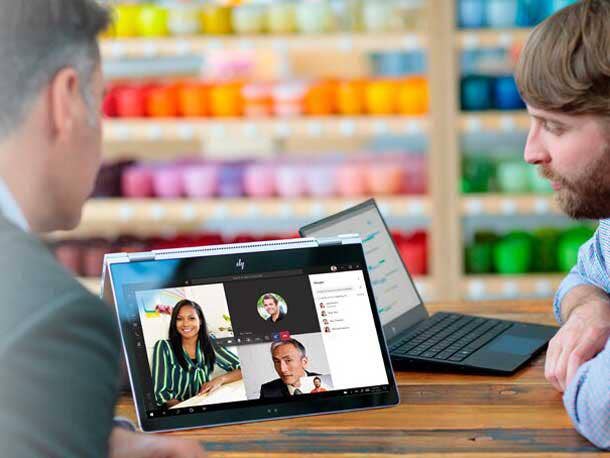
What is the HP Workforce Services and Solutions customer and partner sales proposition?
We are selling PCs and printers today. We are going to build on that and create a new relationship with the customers and we want that to be a lifelong relationship with the customers.’
That changes our financial metrics. That changes our go-to-market strategy. That changes our services and our offerings. That is what brought me to HP.
What can partners glean from your Dish experience and what should they be thinking about as they look at driving a lifelong relationship with the customer in conjunction with HP?
Remember at Dish we were making a couple of big transitions. We were making a transition from traditional satellite to a world of streaming. So for the first time we had to rethink our relationship with our customers to say, ‘I want to put Netflix on the set top box. I want to put Amazon Prime on the set top box.’ Now you are talking to channel partners saying, ‘We have to collectively go out there and be able to sell all of these other different services on top of the set top boxes because that is what the customer wanted. They wanted that flexibility.
The other thing we were looking at at Dish is the transition from pure satellite to 5G. We were expanding the aperture quite a bit in terms of what we were going to offer as a company. That is what was happening as I was leaving Dish. We launched Sling TV when I was there.
You could imagine the dialogue with the partners a lot of whom had grown up in sort of a traditional big dish – small dish satellite world. We were telling them ‘ ‘Guess what we need you to expand into these other different worlds as well.’
The partners were mom and pops who had built their business over decades on the basis of selling satellite dishes door to door. There were thousands of those partners.
Every year we would get them together in a big channel event. So it is not that different than what we are walking into here at HP. Of course we have massive distributors. We have some very, very large global VARs. But we have a lot of entrepreneurs who are running their core businesses, they are selling day in and day out, they have the relationship with the customers. They have been selling those customers our PCs and our printers which we love and we appreciate. Now we are saying, ‘We have got to have a different conversation. We have got to have a broader conversation. Everytime you touch that customer think about the lifetime value of that customer.’A lot of them are doing it already. So what can we at HP come in and do that helps them?
The customer needs are straightforward: it is flexibility because the CIOs are not sure what is going to happen in this hybrid world. It is peace of mind which is security and everything tied to cybersecurity going on in the world. And then it is just make it work. Give the customer something simple so they can just make it work. Those are the three big customer problems.
So from an HP point of view we are saying – for thousands of customers we are relying on our partners for those end user relationships. So it is about us coming in and having a frank dialogue about what do you want me to do and what do you want to do so that we both make money and start to lock in this lifelong relationship with the customers. We are starting that dialogue now.

What was the secret to the partners that got it and didn’t at Dish and what do you see as critical in making sure the IT partners make this transition?
I think the number one issue is a cultural issue. You have to really truly listen to your customers. It sounds so trivial. And we all know how hard it is to do in business because you have decades of experience.
In my last three roles the companies I worked for had been around for decades. So there was a mindset of ‘This is what we have always done.’ I hate the statement ‘We’ve always done it this way’ with a passion.
I think we as HP and our partners need to check ourselves and say are we thinking ‘This is how we have always done it’ or do we have a fresh mindset which is the world is changing.
In the case of Dish there was a huge debate on whether to put Netflix on our set top box. Candidly I was opposed to it at first. And our CTO said- ‘Dave You are Wrong.’ I sat with it for a couple of weeks and said he was right. The right thing to do was to give the customer the choice on the set top box. This was years ago. Think about if we had not made that transition from a business point of view. With Sling TV it was all about how do we put together an offering the customers want because they want their content everywhere.
I think the same sort of openness and listening to what the customer demand is going to be is issue number one (at HP). Issue number two is compensation. What I will promise to partners is a frank dialogue where I value their passion and their role as entrepreneurs. We are all running businesses here. So it is about how do we find a partnership where we all make money and where we align interests recognizing that our goal is to keep a lifelong relationship with the customer. So we’ve got to structure something that works for all of us.
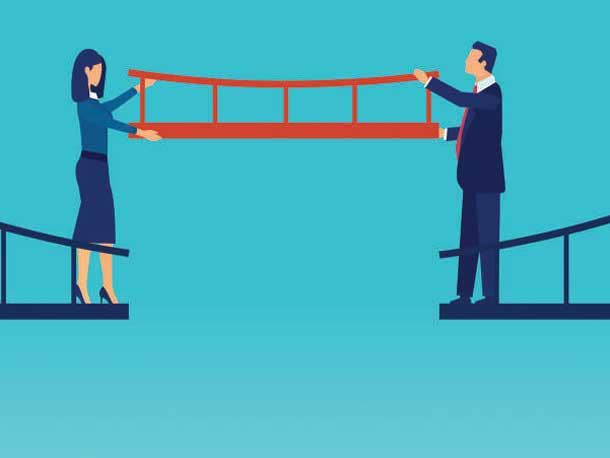
How quickly do you think you can structure a compensation model that capitalizes on the services trend?
We are in active dialogue with partners now. We are not ready to roll it out yet. My first step is to take my own advice. I had a large distributor in just today to listen to what they are doing, to hear their ideas and make sure we figure out in a candid conversation how does this work for all of us.
What is your assessment as to how capable the channel is today to sell those kinds of services?
I think it varies tremendously by channel partner. I think for those who are super capable and have all sorts of technology and financing capabilities and refurbishment skills we still want to partner with them and we want to make sure that we offer probably a much thinner layer of technology that we think we can uniquely offer. And for those who don’t have that capability and don’t really aspire to build it we have global scale so I want to make sure we come in with a complete solution for them.
How many partners have you met with, how is that dialogue going and what is the takeaway?
I have met with dozens of partners so far and there are many more to go.
What is the difference between your role as president of HP Workforce Services and Solutions and the CEO jobs you had at Dish and Tivo?
Everyone thinks of Tivo as a device company but Tivo actually invented the DVR 25 years ago. But Tivo’s business when I was there was primarily licensing a platform to cable companies around the world. It wasn’t through a channel. But it was licensing a platform.
If you are a cable company in the U.K. or in South America you have three options: you can build something yourself, which is hugely complicated. You can license it from Comcast which most people didn’t want to do or you have Tivo.
Tivo actually had a complete cable platform with recurring revenue, subscriber accounts, managing the subscriber business.
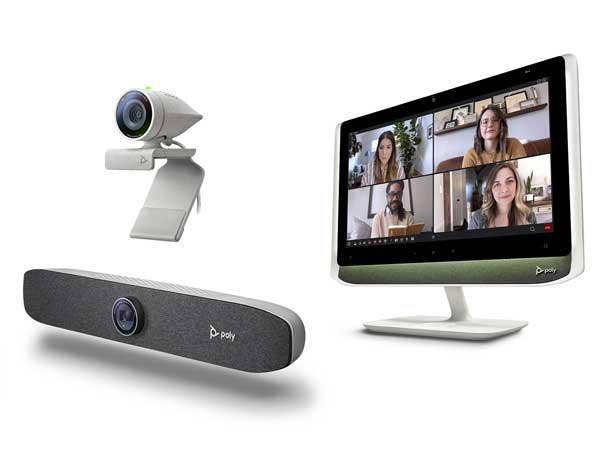
What was your thought process with regard to your future after sealing the deal for HP to acquire Poly?
As soon as you do a deal like that people start calling and saying here is another opportunity for you. It was my third time as CEO so I could have gone and done that another time.
A couple of things really resonated with me. When we were negotiating with HP they kept saying- ‘we are the most responsible and just technology company in the world.’ And we were negotiating so I wasn’t sure how to view that: was this a negotiation line or is it real?
The more I started to talk to the HP executives it was clear to me that there is a massive sense of mission here around justice and responsibility. I have two kids and they tell me that I am not doing a good job of saving the planet for them. So candidly that appeals to my sense of mission.
When I took the job at The Weather Channel I was looking at joining a movie studio in LA or I was looking to go to The Weather Channel in Georgia. I was living in Denver at the time. I asked my boy who was 10 at the time – What should Dad do? And he said ‘You need to go do something mission oriented and productive.’ So I went to The Weather Channel. And being there in the control room as Jim Cantore is talking about the hurricanes is pretty cool and pretty fulfilling.
So there is something in me that wants to do more than make money. I don’t mind the money. But there is something that is amazing about the responsibility of a technology company and being able to have that impact at a scale of the size of HP is a rare opportunity. That is number one. Number two is I asked the executive leadership including (HP CEO) Enrique (Lores)– You have been here 20 to 30 years is HP really committed to change?
I would say emphatically to our partners: HP is committed to change. From the board to the CEO to the senior leadership of this company we are committed to this lifelong relationship with the customers. It is a core part of our strategy going forward. That is appealing. I believe that. I spent time doing my due diligence. The company is all in. Therefore I am all in. This is a really unique to come in at the scale of HP and make a change.
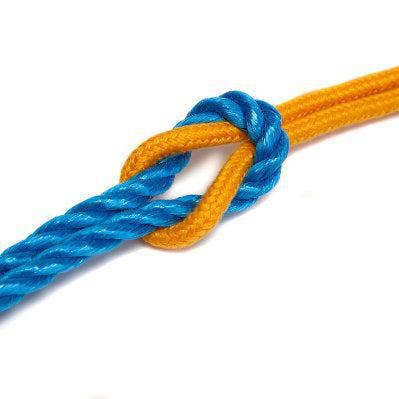
You have a vision of the services opportunity. What is your advice to partners on what they can do to start to get themselves ready to help you fulfill that vision?
I think the first thing I would recommend to a partner is: change the dialogue with your customers. Pick 10 or a dozen of your customers the same way I am doing it with channel partners and ask them what has changed in the way they view IT services? What would make them view us collectively – our channel partners and us - as truly strategic? What are the strategic IT challenges they are trying to solve versus what I would call tactical or logistical challenges? I think if you start to shift your dialogue with our mutual customers from tactical to strategic that is what creates that lifelong trusted relationship. But it is a different listening skill. It is a bit of an uncomfortable place because I am asking our partners and our customers things where I don’t necessarily know the answer but I think most of our joint customers would really value that kind of open ended dialogue.
How has the integration of the two companies been so far?
I was down in Austin recently which is where the Poly video engineering team is. And the energy level, and the number of creative ideas that are flowing around the video engineering space is tremendous. The team energy was great!
The team aperture in terms of the number of ideas that they are thinking about with regard to how HP and Poly can collectively win in the collaboration rooms (is inspiring).
Now that we are bringing the PCs and image processing all together in a unique way was actually really, really compelling! I walked away excited from that team meeting in Austin.
Integrations always create uncertainty. But we are three months now officially into the post integration close and I would say the team energy is great.
What has enabled that is the cultures were actually very similar. People are there to solve a bit of a mission oriented problem which is motivating. A lot of the Poly team have been there for 20 some years with the Plantronics and Polycom heritage. So there is a rich heritage of engineering. Being able to walk into the customer experience center here in Palo Alto and see the (HP co-founders) Bill (Hewlett) and Dave (Packard) HP heritage is pretty compelling. We would tell the story about Poly putting the first headset on the moon. And HP has its decades long stories. Engineers vibe off of that. They know they are accomplishing something that matters. That shared heritage as part of the culture has been pretty important.

What kinds of things encompass Workforce Services and Solutions?
At a very, very high level it is anything that is subscription oriented. The consumer subscription businesses for us includes Instant Ink and some other offerings. The workforce services solutions business is new angles we are investigating that leverage our print technology whether it is industrial printing or 3D. It is new areas we we are exploring like Microfluidics.
There is the big shift to subscription for HP which is representative of those first two buckets whether it is a consumer or a workforce oriented angle, making sure that we are establishing that lifelong relationship. Then it is taking all of the decades of engineering and saying what are the natural growth vectors that come off of that for 3D printing, micro fluidics,..etc. I think there are some pretty amazing growth opportunities in each one of those but then collectively they represent a massive shift for us as a company.
Are you looking at how services will need to be different based on where you are in a hybrid environment?
We have talked about the shift from just discussing the amenities in the office. We all used to talk about the gym or the food. Now we are really talking about the experience in the office and what is going to make the experience in the office more compelling than me sitting at home with my custom monitor and my Poly gear and my Poly headset. Everything is kind of set up for a beautiful experience from home. The in office experience has to be better. Otherwise employees won’t come back. Food and the gym help but it is definitely not sufficient to make for a compelling hybrid experience.
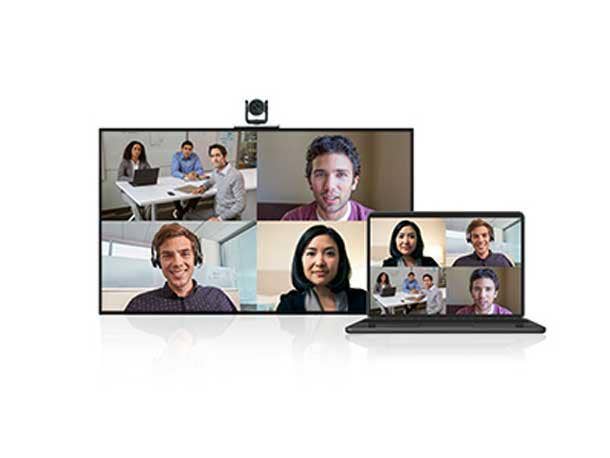
What are some of the things customers are looking for from that hybrid work experience?
(One of them is) digital equity in a meeting. There are a lot of pieces to that. It’s making sure someone can participate (in a video conference) and we can gauge the sentiment and understand whether they are engaged or not. When we are sitting in a room like this it having multiple camera angles so that instead of seeing all five of us of us presented in sort of that executive presence frame you would have multiple cameras picking up different boxes to present the meeting in an equitable manner. Then it becomes a much more comfortable experience for whoever is remote.
Likewise if there are 30 people on the call we can tell if we missed getting the perspective of person X, Y or Z. From a digital equity point of view that is huge. So we have lots of partnerships with Zoom, Microsoft and Google and others on that.
We at HP and Poly collectively believe the intelligence at the edge that can be brought to bear between the Poly image processing and the HP compute is something that is really, really critical going forward. And the rooms that we build out have to have those components otherwise it won’t provide for a compelling experience. That experience for digital equity is sort of the key to getting employees back in the office.
We all think there is some value for people being in the office. Food is amazing. But food is not sufficient. You have got to make the experience in the office better than the one at home or employees won’t come in (to the office).
How much better is this going to be for partners as HP moves to a lifetime relationship model?
My commitment to them is I want them to own that customer for life and I want to bring the full power of the HP brand, the HP services capabilities, the HP balance sheet to bear to support that and how do make it even bigger on that basis. I think it could be astonishing for all of us.